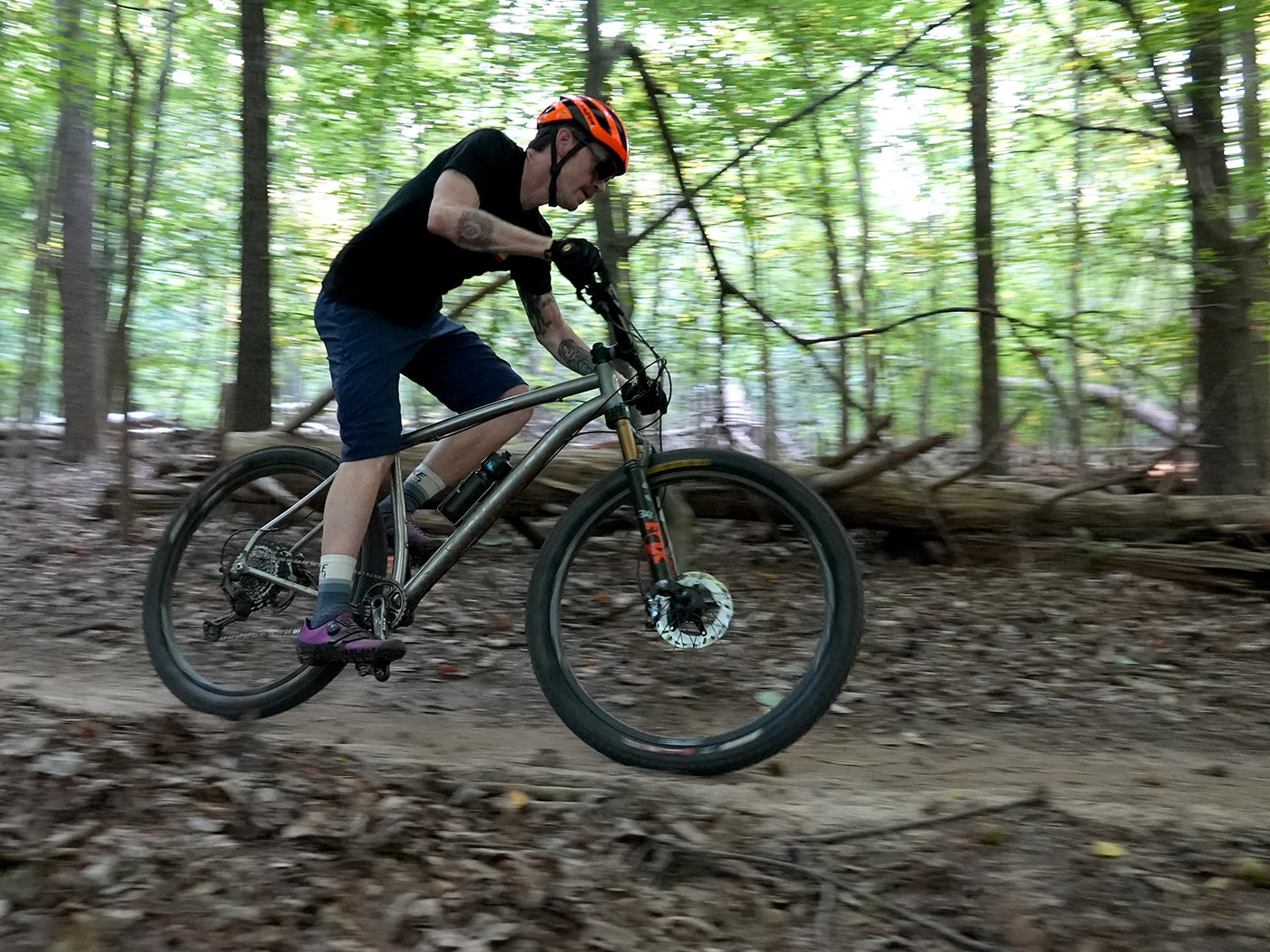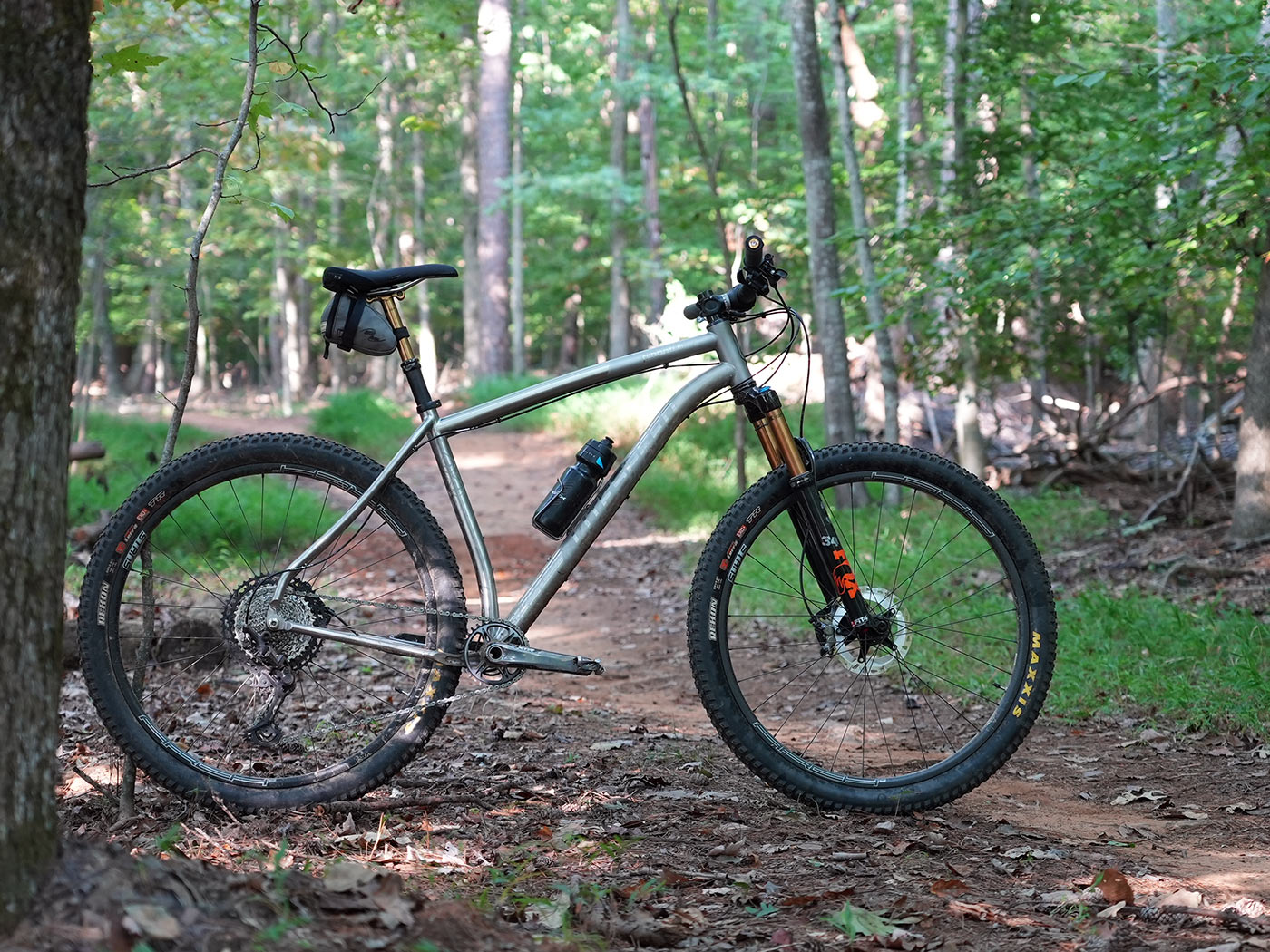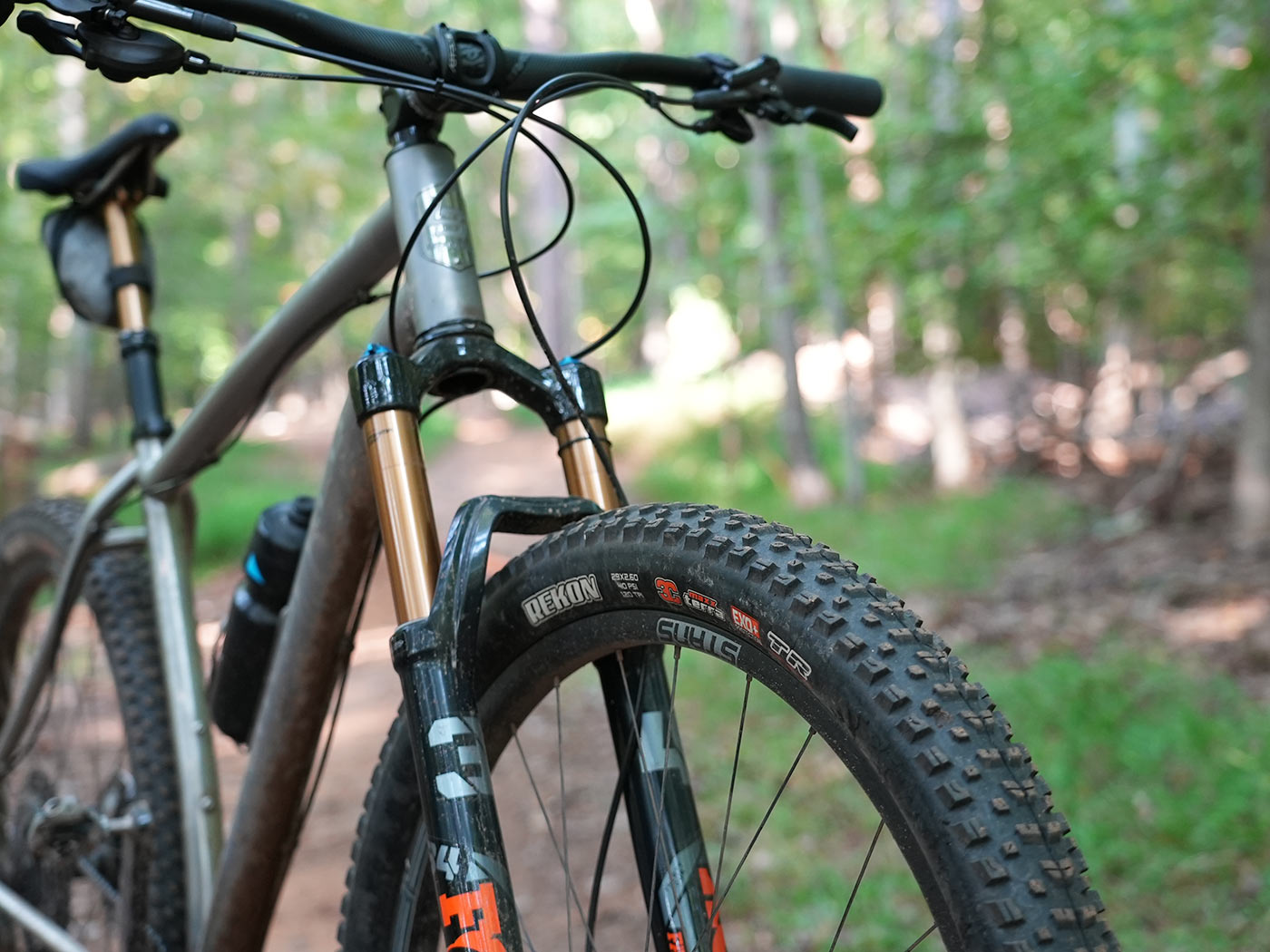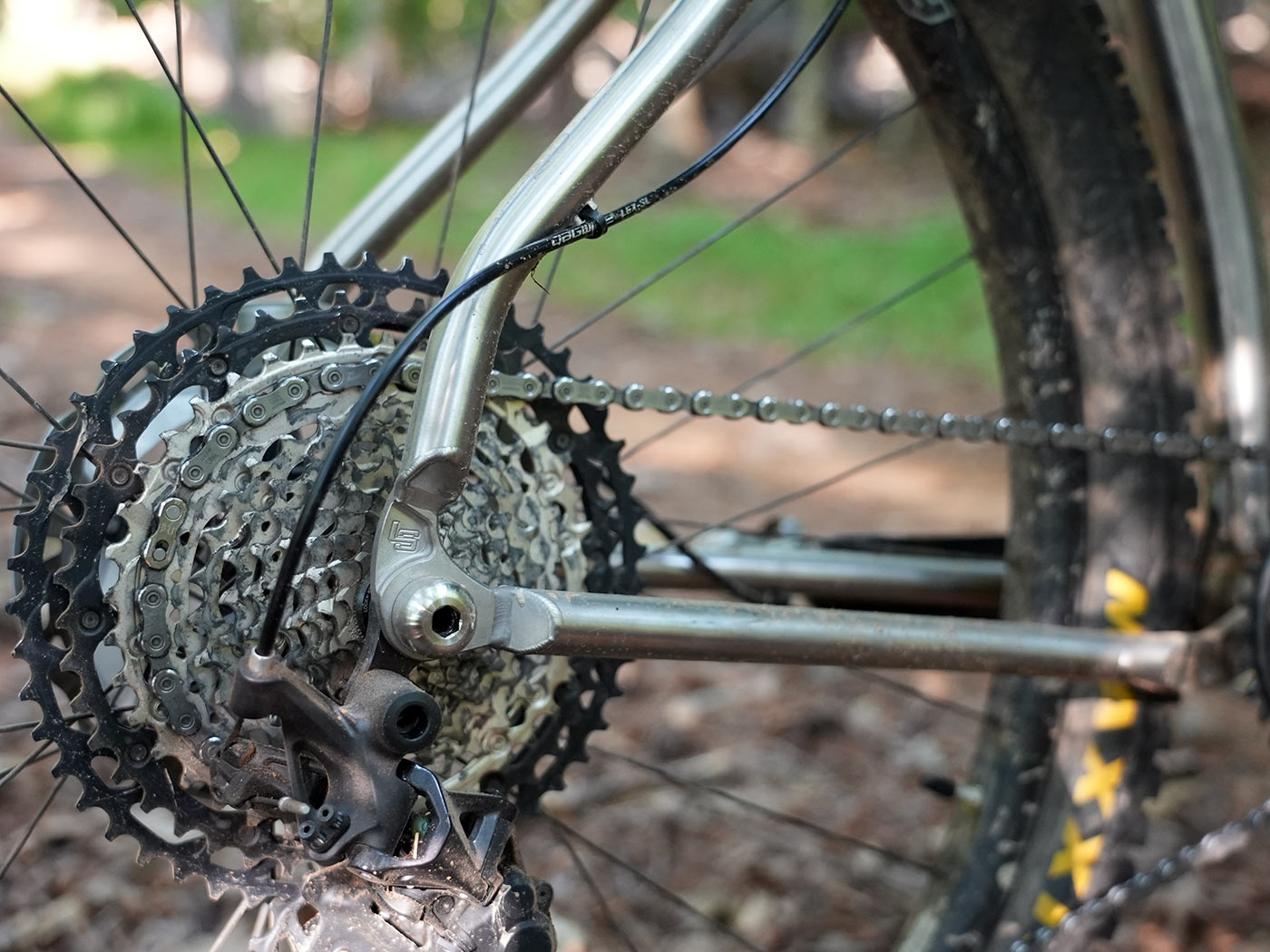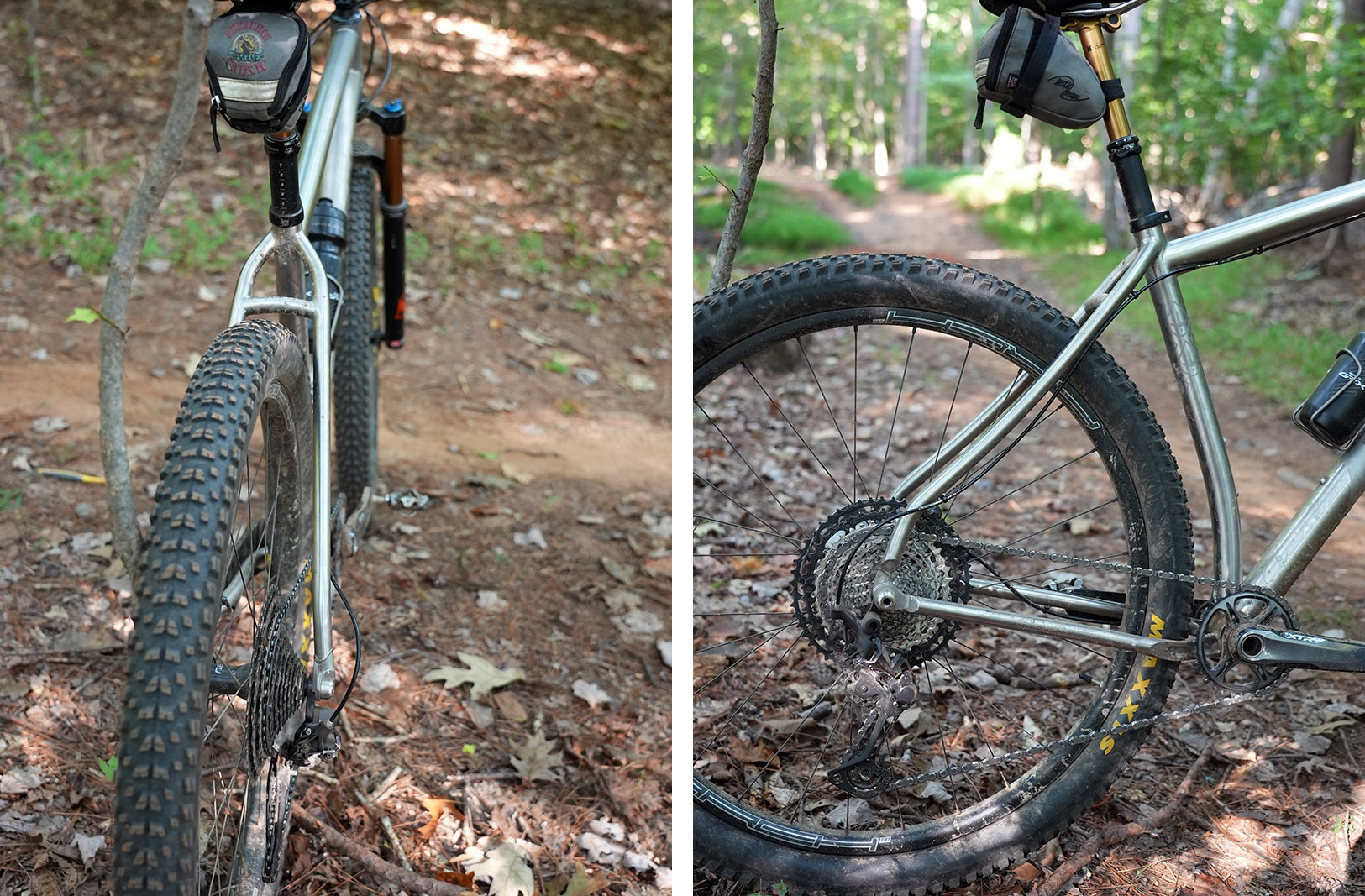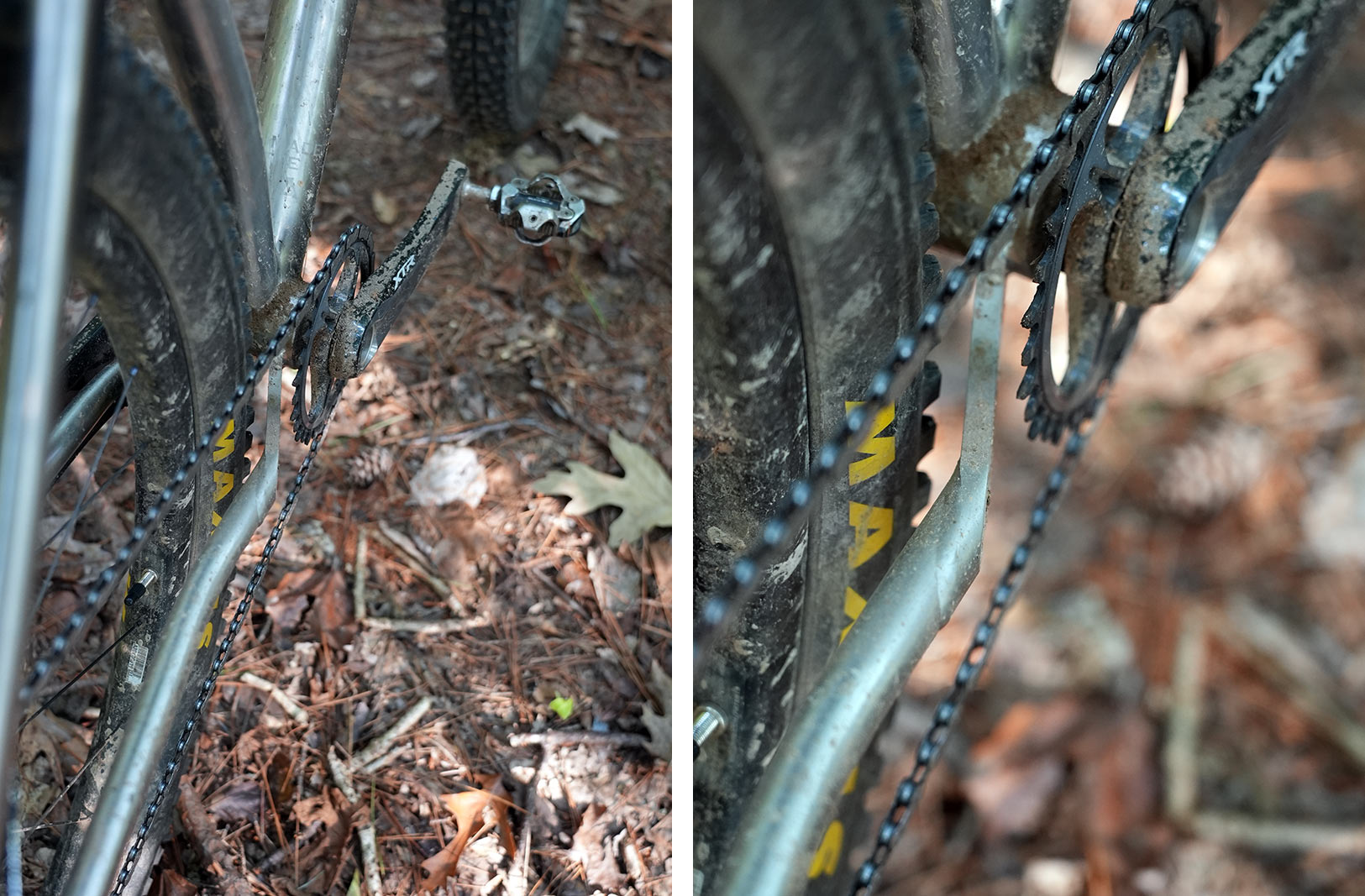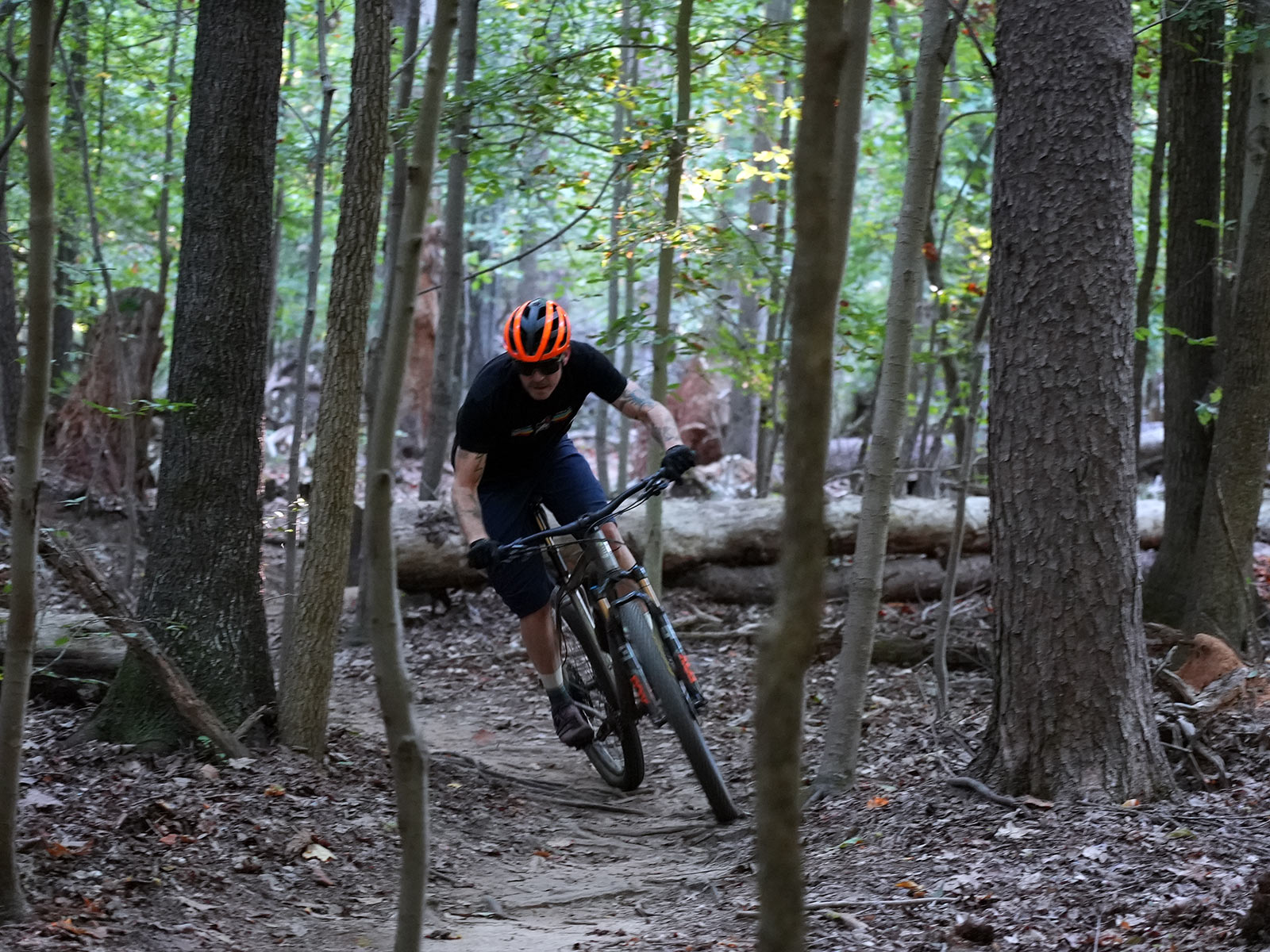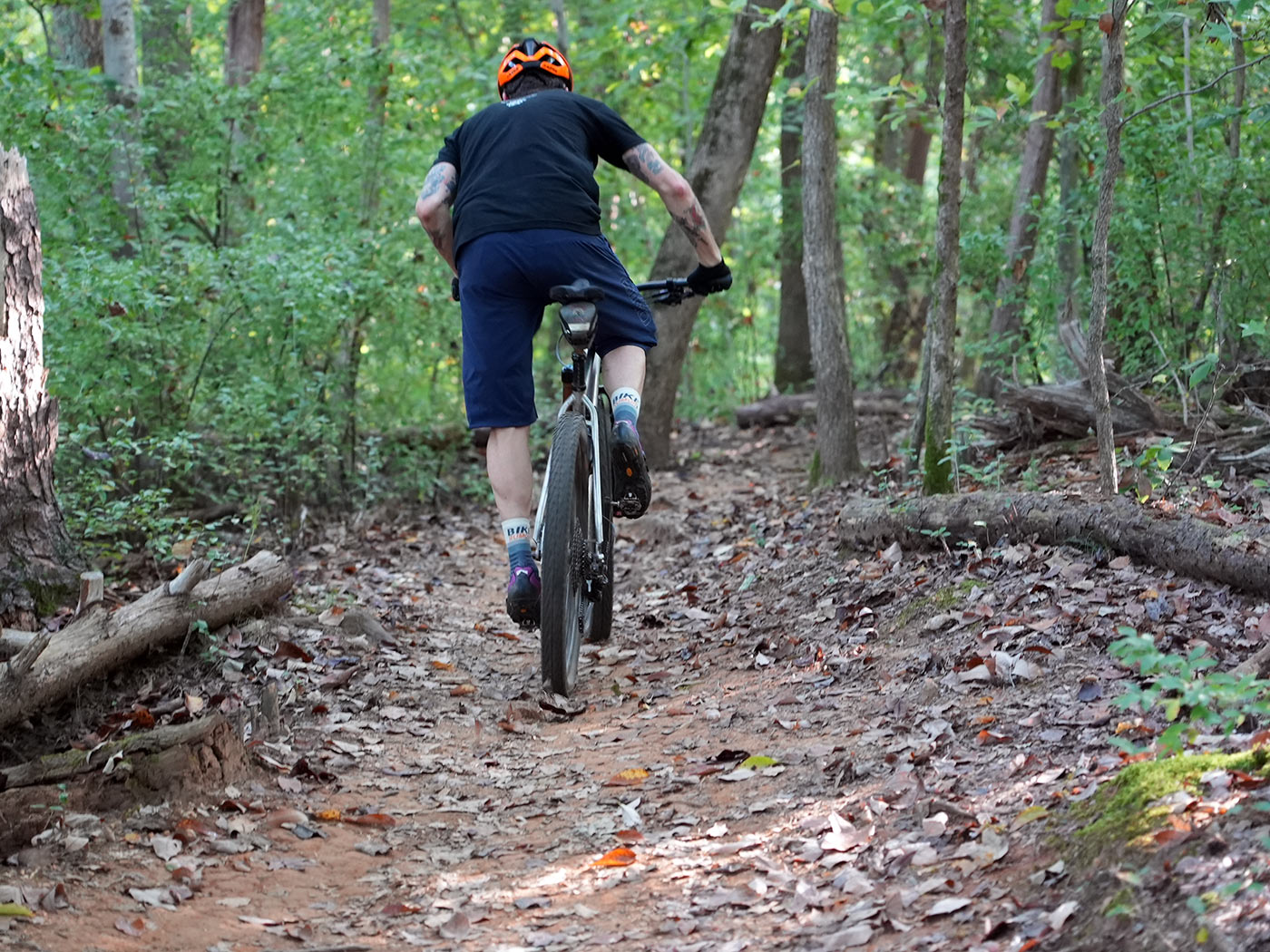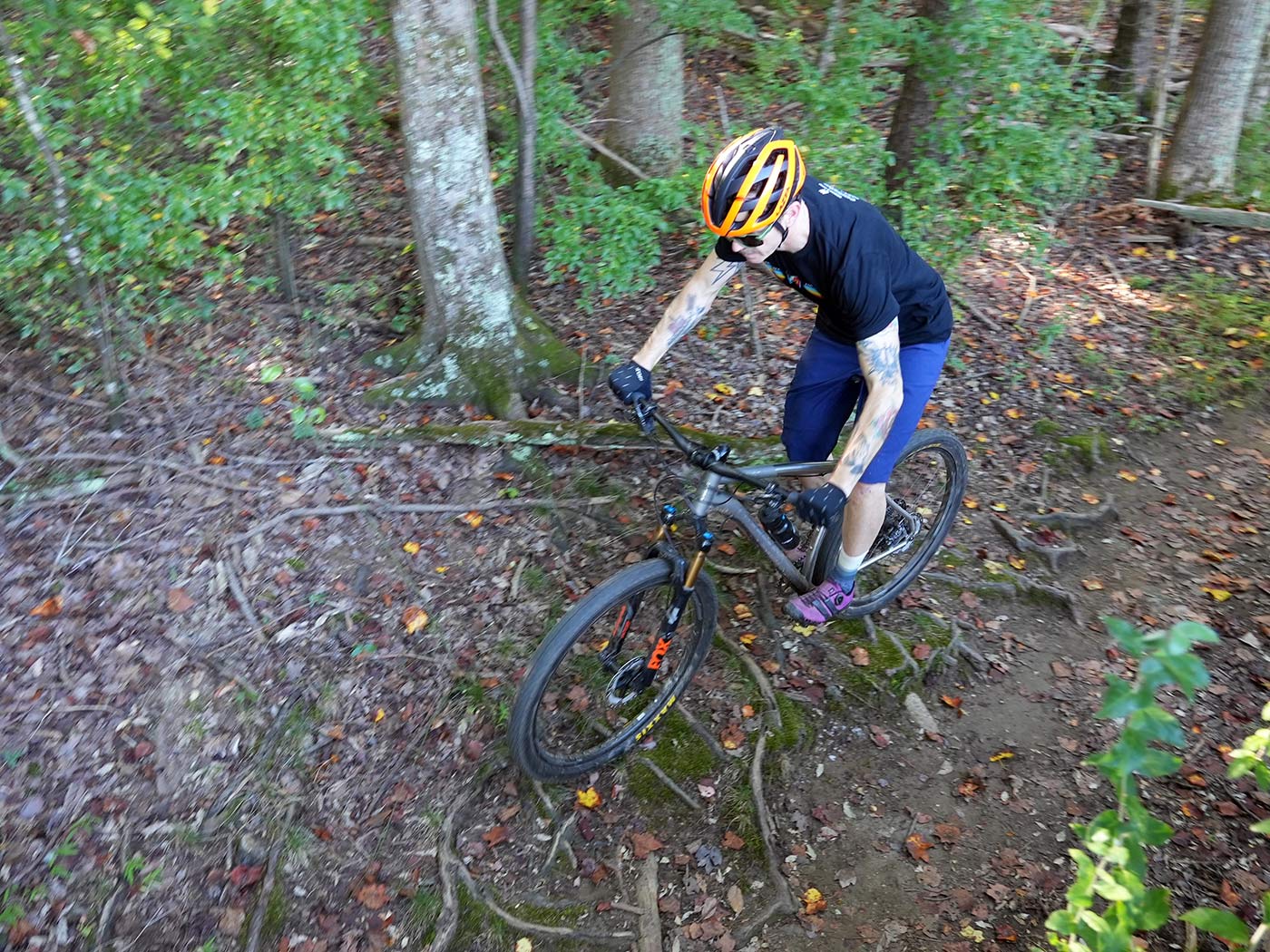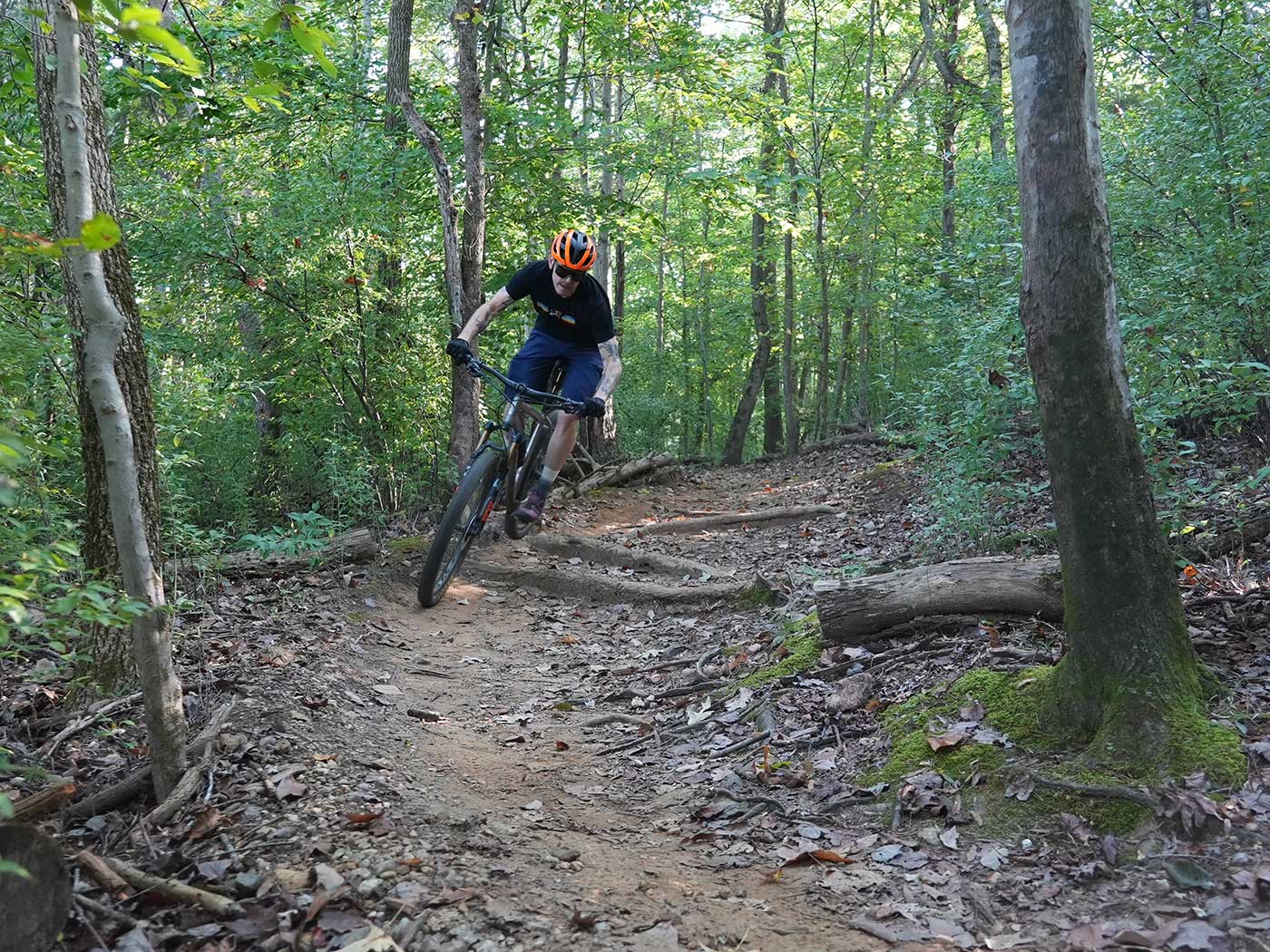The third iteration of the Litespeed Pinhoti mountain bike debuted March with a more aggressive frame and bigger tire clearance. Check our launch coverage for all the tech details and Tyler’s first impressions.
Since then, we’ve been shredding it around the local trails and some bigger mountains in Western Carolina, under a proper hardtail fan. So, did the titanium tubing and trail-ready geometry find that sweet spot between racy efficiency and terrain taming capability? Let’s find out…
Litespeed Pinhoti III overview
The full rundown and actual weight is in our original story, but basically the Pinhoti III gets a shaped ti frame designed to be laterally and torsionally stiff, but still give a little where it counts to improve rider comfort.
It’s designed around 120-140mm forks, with a slacker head angle to improve handling on the descents.
Multiple bends and curves are what make the rear end comfortable, accentuating titanium’s inherent smoothness.
The bent seat tube and machined chainstay yoke (below) allow them to tuck a massive 29×2.6 full knobby tire in tight.
Frames run $2,349 and complete bikes range from $4,745 (SLX) to $7,445 (XTR).
Litespeed Pinhoti III ride review
Our tester, Ben, is a former pro roadie who converted to mountain bikes long ago, but still doesn’t own a full suspension bike. He did finally transition off a singlespeed to gears a few years back, and then to a longer travel Kona. Here’s what he had to say about the Pinhoti III:
It reminded me of my steel Niner SIR9 but a little more lively. The new geometry makes it really stable. I felt very comfortable carving turns and railing berms.
It takes a little more effort to accelerate, and I wasn’t whipping it around like a lightweight race bike. But it’s still efficient in all the ways a hardtail should be.
It’s a great all-around bike for local trails and even heading to the mountains for the weekend. If you looking for something fast and racy for cross country – this isn’t your bike.
Those 2.6″ tires were a nice addition. Not only do they add a lot of confidence in the corners and braking, they also make it easier to take a few risks. Jumps or really fast descents that could easily overwhelm most hardtails became fun. I let myself go a little farther or faster or higher knowing that they’d make up for it.
2.6″ tires are fairly standard on full suspension trail bikes these days, but getting them on a hardtail less so. And I could always switch to something thinner and lighter if I wanted. And even though I wouldn’t call this a race bike, you drop down to a 120mm fork for a specific event, and then go back to it’s standard “fun” build.
I was super comfortable for 3+ hours and wouldn’t think twice about taking that bike out for a long day or two. It’s definitely more of a cruiser and a carving rig, and just a really fun mountain bike. Bonus points that it’s titanium and will likely last a long, long time.
